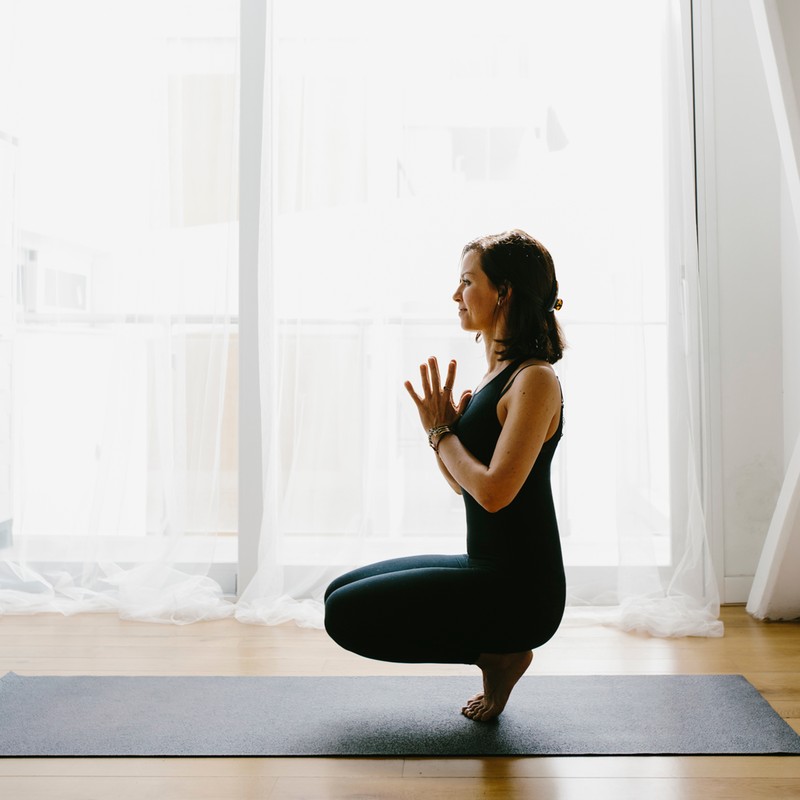

The Importance of Balance As We Age
Firstly, How Is Balance Defined?
“The word balance can be used in a lot of different contexts, but all essentially relate to a state of equilibrium or stability. In the context of the physical body, balance refers to the ability to maintain stability and control over one's movements whether walking, standing on one leg or in fact any kind of movement.” – Abby McLachlan, founder of yoga, Pilates and meditation studio East of Eden
“Balance is divided into two types: static (holding your body in a specific position and posture, maintaining the body’s mass over the base of support) and dynamic (maintaining balance while moving your body). Both types of balance are essential and you can improve both with targeted exercises.” – Sarah Aspinall, RAD registered ballet teacher and founder of BreakingBallet.com
Why Does Balance Naturally Begin To Decline?
“There can be many reasons for somebody to lose their ability to balance well, but the most common is to do with age. The loss of muscle mass that comes with ageing can impact our posture and coordination, and our ability to respond physically to a loss of balance. As we get older, we often experience a decline in our sensory functions, especially eyesight and hearing. Our balance organ, the vestibular system, is actually found inside our ear, so experiencing a decline in this function directly affects balance. We also lose proprioception as we get older, an awareness of our body position in space, and this can also affect balance.” – Abby
What Are Some Signs to Watch Out For?
“I encourage people to think about how they go into movements and how they reverse out of them. Can they do it in the same way? That challenges most of the senses and is good for figuring out how to do things. That playfulness is an important aspect of balance.” – Nahid de Belgeonne, author of Soothe and founder of TheHumanMethod.co.uk
“Loss of balance can feel like you're spinning when you're actually standing still, feeling dizzy without explanation or feeling like you're floating. Balance issues after the age of 50 are often worse when you go from sitting to standing, when you’re walking around or moving your head horizontally or vertically.” – Sarah
“If you have difficulty standing still without swaying or feeling unsteady, especially when standing on one leg, this could indicate a decline in balance. Other signs include finding yourself tripping or stumbling more often than usual, experiencing falls and changes in gait, such as shuffling steps, taking smaller strides or feeling unsteady while walking. If you find it challenging to navigate stairs and feel particularly unsteady or insecure when ascending or descending, it could also be a sign of balance decline. Weakness in the muscles of the legs, core or ankles, or pain in the joints can contribute to balance problems. Feeling less confident in your ability to maintain balance during everyday activities or avoiding certain activities due to fear of falling are red flags for declining balance.” – Gemma Folkard, founder of Shape Pilates
Why Is It Important to Address A Decline in Balance?
“Noticing changes in balance allows you to minimise the risk of falls and injuries and maintain your independence and quality of life for as long as possible. By taking the necessary steps to address any issues, you can reverse or slow down the effects. To put it into perspective, falls are the leading cause of injury-related hospital admissions for people aged 65 and older in the UK. Each year, around one-third of people aged 65 and over and half of those aged 80 and over experience a fall.” – Gemma
What Other Functions Does Balance Have An Impact On?
“Good balance helps with a multitude of other functions, from your emotional wellbeing and confidence to improving your muscle strength and endurance, your coordination and your posture. If you play sports, you’ll improve your performance by working on your balance, and there’s even research suggesting that systematic balance training is capable of enhancing some cognitive functions, such as memory and spatial cognition.” – Abby
“Balance is an essential aspect of human functioning that influences various physical, cognitive and emotional aspects of our lives. Practising balance-based activities can have a significant effect, not only on the strength of our muscles but also on our brain health. Coordination, motor skills and focus and engagement can promote the formation of new neural pathways, enhancing cognitive function and slowing age-related cognitive decline. By prioritising activities that improve balance, you will enhance your overall health, mobility and quality of life.” – Gemma
“As you age, your body changes and leaves you at a greater risk of some health conditions. Loss of balance is often a symptom of another health condition instead of being a stand-alone condition that needs treatment (sudden changes to your blood pressure, lack of circulation, neurological conditions, medications, low iron levels or low blood sugar).” – Sarah
What Are Some Other Factors in Declining Balance, Aside From Age?
“Poor posture, such as slouching or leaning excessively to one side, can affect balance and stability. Not all women experience balance issues during the menopause, but there are some factors that could have an impact. Changes in our hormones, decrease in bone mass, changes in sleep patterns, joint pain and emotional factors could leave you feeling less stable physically.” – Gemma
How Can We Help To Maintain Good Balance As We Age?
“When we spend so much time sitting down or staying in one position, our ability to balance can be hugely impacted. You have probably heard that standing on one leg can improve your body and brain communication and is a marker of longevity. When you stand on one leg, you are taking in signals from your visual system, your vestibular system and your proprioceptive system in the muscles, joints and tendons. Wobbling and recalibrating these systems is a good way to connect your bones, joints, muscles, skin, eyes and ears to work together. Your proprioceptive sensors are in a feedback loop with your brain and your motor nerves to negotiate your balance in gravity.” – Nahid
“Keep moving, keep challenging yourself. Without it being a huge effort, simply standing on one leg – maybe with your eyes closed as you clean your teeth – is a good way to gauge how well you are balancing. Incorporate more walking into your day, especially on uneven surfaces (make sure you have proper footwear). Include strength training and try yoga or Pilates; yoga especially will have lots of balance challenges as part of a class and you’ll be amazed how quickly you start to get stronger in your standing balances. Also try and eat well, reduce alcohol, stay hydrated and get a good night’s sleep – all the usual advice for good health applies here too!” – Abby
What Physical Activities Are Good For Supporting Balance?
“Moving slowly is challenging for both your vestibular system and your visual system. Tilting, leaning in (I use resistance bands secured to the wall to practise lunges as I lean in and away) and unstable surfaces are all great challenges for your balance.” – Nahid
“Mat-based exercises like Pilates, barre and yoga are great for coordination, concentration and balance. They integrate choreography to challenge the mind and there are also many opportunities to notice how your body is feeling and any changes in your abilities. Pilates moves are cued specifically from the powerhouse or core, which is essentially the body’s centre of gravity. This means that on the mat with nothing to push or pull against, apart from your own body weight, your special awareness is enhanced, and therefore your ability to stabilise yourself in everyday tasks is improved. Strength training is also a brilliant way to build the muscles responsible for stability and maintain good bone density. Both are huge factors in avoiding falls as we age.” – Gemma
“Try an arabesque focus – shifting your weight slightly forward, carry your raised leg to the back and straighten it. It doesn’t need to be high off the floor but try to keep your body upright. You can place your arms out to the side. Zip up your core and lift out of your standing hip by pushing your foot into the floor and finding space between your hip bone and lower ribs. To make this more challenging, slowly bend and straighten the leg you are standing on. Keeping your eye-line focused will help you as you start to move. Try progressing to eight bend and stretches on each leg.” – Sarah
Visit EastOfEden.uk, BreakingBallet.com, TheHumanMethod.co.uk & Shape-Pilates.com
DISCLAIMER: Features published by SheerLuxe are not intended to treat, diagnose, cure or prevent any disease. Always seek the advice of your GP or another qualified healthcare provider for any questions you have regarding a medical condition, and before undertaking any diet, exercise or other health-related programme.
DISCLAIMER: We endeavour to always credit the correct original source of every image we use. If you think a credit may be incorrect, please contact us at info@sheerluxe.com.





